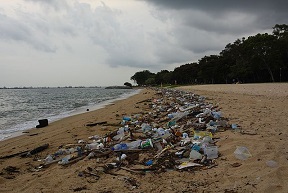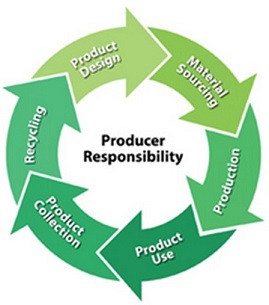
Sustainability is growing in importance
Lux’s new report, ‘Predicting Policy for Sustainable Materials’, develops a qualitative framework to assess policies; concentrating on impact and probability of adoption. Lux starts out to highlight the growing importance of sustainability in the materials and chemicals industries. Sustainability has become a priority for innovation in these industries; as in consumer-facing industries like apparel, food, and beauty. Much of this renewed importance is enhanced by government regulations. Therefore, corporations need to understand and predict future regulations; both to prepare their existing business and to explore the potential for new opportunities. Companies also need to take a fresh view on their innovation efforts, according to Lux Research, as sustainable materials policy now often intends to bring about an entire system transition.
How likely is it for a regulation to spread and be adopted generally across the world? In order to asses this, Lux evaluates policies on four factors: anticipated cost, ease of adoption, international reputation, and impact. This has not been an easy task, Anthony Schiavo, Research Director at Lux Research and lead author of the report explains. Firstly, it is difficult to forecast the development of regulation, heavily dependent as it is on political and economic factors. And then, ‘sustainability’ has many meanings, not always well understood by the legislators.
General view on waste policy

Lux outlines a number of beliefs about policy:
– Simple policy, particularly when the impacts are visible, is more likely to spread than complex policy, a burden on both governments and corporations.
– Revenue-generating policy is more likely to spread than cost-creating policy.
– Some countries and regions are policy pioneers, notably the EU and California.
– Policy that achieves its stated goals is more likely to spread than policy that does not.
But in their final evaluation, another factor appears: ease of adoption. Precisely the sustainable materials policy with the biggest impact suffers from this factor. That is extended producer responsibility, EPR. Under this policy, the manufacturer of the product is made responsible for the entire lifecycle of the product, especially for the take-back, recycling and final disposal. EPR requires a strong government that can evaluate the environmental impact of products through their lifecycle; and that can tax companies insofar as they do not offer adequate environmental solutions for these impacts. Lux therefore judges that EPR policy, although successful in Europe, will struggle to gain adoption elsewhere, as implementation remains a major barrier.
Sustainable materials policy

So on balance, Lux expects the biggest and most likely impacts globally to come from two other policies: bans on single-use plastics and taxes on unrecyclable plastics. Europe’s tax on plastic packaging for instance, is one of the most impactful and profitable sustainability packaging taxes ever created. ‘It may not be viable in many countries for the immediate future, but its overall impact on packaging materials and design will be closely monitored by other leading nations.’ Europe has also started to ban single-use plastics. China is following suit, this policy may spread because of China’s regional influence. The policy already supports the growth of bioplastics. Moreover, China considers a tax on unrecycled plastics; that would have major knock effects on the entire industry and promote growth in plastic alternatives. Generally, China emerges as the nation to watch.
So on balance, the sustainable materials policy most likely to be successful globally consists of bans on single-use plastics and taxes on unrecyclable plastics. This might also be true for the US. Although impactful, a nation-wide EPR scheme could run into trouble. Such extended producer responsibility might be best pursued on the state level.
Rapid development
Even the report’s summary reveals that this area is in rapid development. Lux summarizes its findings in three points. Firstly, they note that regulations will create space for more expensive innovations that can then become mainstream. Secondly, according to them, policy foresight is going to get more important, as it is the key driver for sustainability and system transition. And finally, they urge the world to look to policy in Asia; for these growing economies consume a lot of packaging and are still building out waste management ecosystems.
Author
Diederik van der Hoeven
Source
Supplier
European Union
Government of California
Lux Research, Inc.
Share
Renewable Carbon News – Daily Newsletter
Subscribe to our daily email newsletter – the world's leading newsletter on renewable materials and chemicals










